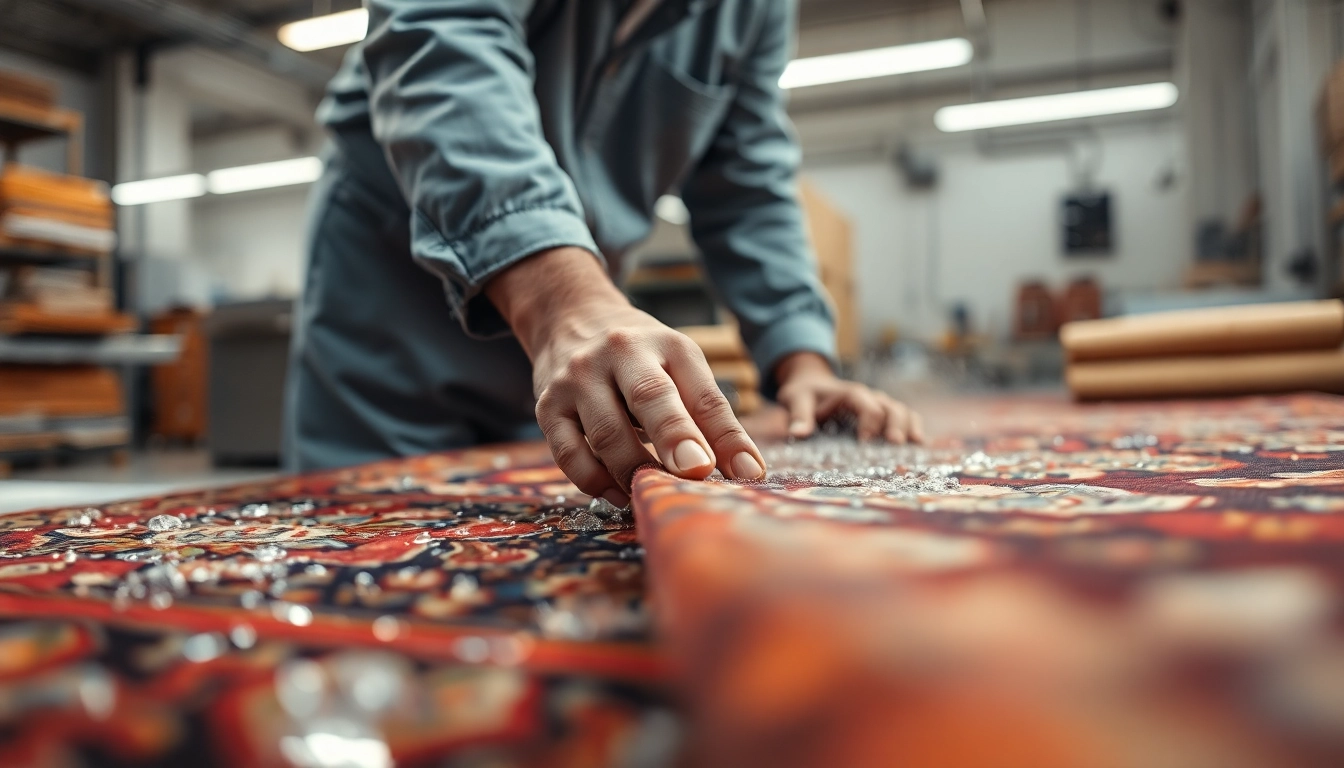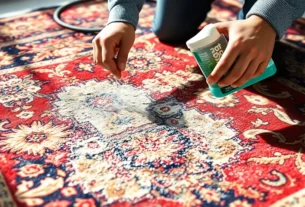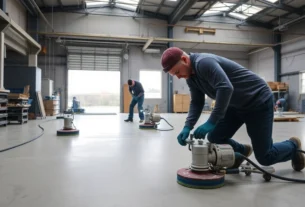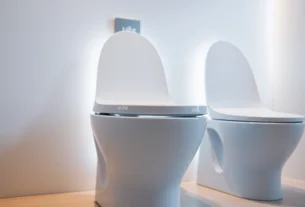Introduction to Lavaggio Tappeto Milano: Why Professional Cleaning Matters
Maintaining the beauty and longevity of your area rugs is an investment in both aesthetics and health. In Milan, where interior decor is synonymous with sophistication and style, ensuring that your lavaggio tappeto Milano is performed by experienced professionals is crucial. While DIY methods may appear cost-effective or convenient, they often fall short in removing deep-seated dirt, allergens, and stains without risking damage to delicate fibers. Professional rug cleaning services employ advanced techniques that preserve the integrity of your valuable rugs while delivering a thorough, hygienic clean.
Understanding the importance of expert cleaning for valuable rugs
Rugs like Persian, Oriental, antique, and modern pieces each possess unique textures and materials requiring tailored care. Expert cleaners understand these nuances and use specialized equipment and eco-friendly solutions to restore vibrancy and eliminate dust, bacteria, and pollutants embedded over time. Proper cleaning not only enhances visual appeal but also contributes to healthier living environments by removing allergens that accumulate in the fibers.
Common challenges of DIY cleaning versus professional methods
Many homeowners attempt to clean their rugs using household detergents or homemade solutions. These methods often result in inadequate dirt removal, fiber damage, color bleeding, or extended drying times that promote mold growth. Conversely, professional cleaning services utilize calibrated water temperature, pH-neutral detergents, and controlled drying environments that effectively address common challenges, including stubborn stains, delicate fiber preservation, and odor elimination.
How professional lavaggio protects and extends your rug’s lifespan
Professional cleaning prolongs the life of your rugs by preventing the deterioration caused by dirt accumulation and improper cleaning techniques. Regular maintenance by experienced technicians can halt fiber wear, preserve dye vibrancy, and maintain structural strength. Moreover, periodic deep cleaning reduces the need for costly repairs or replacements, thereby protecting your investment in fine quality pieces.
Types of Tappeti and Suitable Cleaning Techniques
Cleaning methods for persian, oriental, antique, and modern rugs
The diversity of rugs in Milan ranges from vintage Persian and Oriental masterpieces to contemporary, machine-made pieces. Each requires specific cleaning approaches. Traditional hand-washing with gentle, water-based methods is ideal for authentic persian and antique rugs, preserving their delicate fibers and intricate dyes. Modern synthetic rugs may tolerate more robust cleaning, including proprietary commercial systems designed to lift dirt efficiently without harming fibers. Choosing the correct technique based on rug type ensures thorough cleanliness while safeguarding authenticity and value.
Special considerations for delicate fabrics like silk and wool
Silk and wool rugs demand meticulous care. Silk, being highly sensitive to agitation and chemicals, must be cleaned using extremely mild, pH-balanced solutions, with minimal water immersion to prevent damage. Wool rugs can felter or shrink if exposed to excessive moisture or harsh chemicals. Professional cleaners often employ low-moisture or dry cleaning techniques, coupled with gentle agitation, to maintain texture and color vibrancy. Restorative treatments like stain removal and dye fixing further enhance longevity and appearance.
Restoration and stain removal strategies for each rug type
Stubborn stains from wine, coffee, or dirt require advanced treatments. Professionals assess whether organic, enzymatic, or chemical solutions are most appropriate, tailoring their approach to avoid bleaching or fiber damage. For antique or valuable pieces, restorers may also undertake minor repairs or color retouching, ensuring the rug’s historical integrity remains intact. Regular assessments can help identify early damage signs, enabling timely interventions that prevent costly restorations.
Step-by-Step Guide to Effective Lavaggio Tappeto Milano
Initial assessment and preparation of the rug
Effective cleaning begins with a thorough evaluation of the rug’s condition, fiber type, and existing stains. Experts inspect for signs of wear, color bleeding, moth damage, or structural issues. Pre-treatment—such as vacuuming to remove loose dirt and gentle brushing—prepares the surface for deep cleaning and minimizes residual debris during the process.
Water-based deep cleaning process and use of eco-friendly detergents
High-quality, environmentally safe detergents are applied to loosen embedded dirt. The process involves controlled water immersion or low-moisture techniques, leveraging steam or hot water extraction for deep cleaning. Equipment like hot water extraction machines, also known as carpet steam cleaners, utilize suction to remove residual dirt and excess moisture efficiently. This method ensures a comprehensive clean while reducing chemical exposure and environmental impact.
Drying, deodorizing, and finishing touches for a fresh look
Post-cleaning, rugs are carefully dried in climate-controlled environments to prevent mold and fiber distortion. Deodorizing agents eliminate odors caused by pets or smoke, while finishing touches—such as grooming the pile to restore uniformity—ensure the rug looks revitalized. Some providers also apply protective treatments that repel stains and dirt, extending the period between professional cleanings.
Pricing, Timeframe, and Choosing the Right Service Provider
Average costs for lavaggio tappeto Milano based on size and material
Cost structures vary widely depending on the rug’s size, material, and complexity. Basic cleaning typically costs from €15 to €30 per square meter, with more delicate or antique pieces incurring higher rates due to meticulous handling. For example, cleaning a medium-sized Persian rug measuring 200×300 cm can range from €100 to €180, depending on the service provider and specific treatments required. Always request detailed quotes to compare offerings effectively.
Expected turnaround times and scheduling options
Cleaning cycles generally span from 24 to 72 hours, allowing adequate drying and finishing time. Many providers offer flexible scheduling, including emergency or same-day services for urgent needs. Regular maintenance—scheduled every 12 to 18 months—ensures ongoing rug health without disrupting your daily routine.
Tips for selecting trusted and experienced professionals in Milano
When choosing a service, verify credentials, read customer reviews, and inquire about their cleaning techniques and experience with specific rug types. Certified specialists often display memberships in industry associations and employ certified eco-friendly products. Samples of past work and transparent pricing policies further confirm reliability. Engaging with established providers like Persia&Tappeti or Tehran Lavaggio ensures high standards and peace of mind.
Maintaining Your Clean Tappeto Post-Services and Preventive Tips
Regular upkeep to prolong cleanliness and beauty
To maximize the benefits of professional cleaning, adopt routine maintenance practices. Regular vacuuming removes surface dirt, especially in high-traffic areas. Using protective pads under furniture prevents crushing of fibers. Rotating rugs periodically ensures even wear and exposure to sunlight, which helps preserve color vibrancy.
DIY maintenance tips for daily and seasonal care
Spills should be addressed promptly with blotting techniques—avoiding rubbing—and mild cleaning solutions. Seasonal care involves airing out rugs, removing dust with gentle brushing, and applying light protective sprays. Avoid harsh chemicals or excessive water, which can compromise delicate fibers.
When to schedule professional cleaning for optimal results
Experts recommend scheduling deep cleaning every 12 to 18 months, depending on usage and exposure to dirt. High-traffic areas, homes with pets, or rugs in sunny rooms may require more frequent sessions. Recognizing early signs of deterioration—such as persistent odors, fading colors, or fiber matting—should prompt immediate professional consultation.



